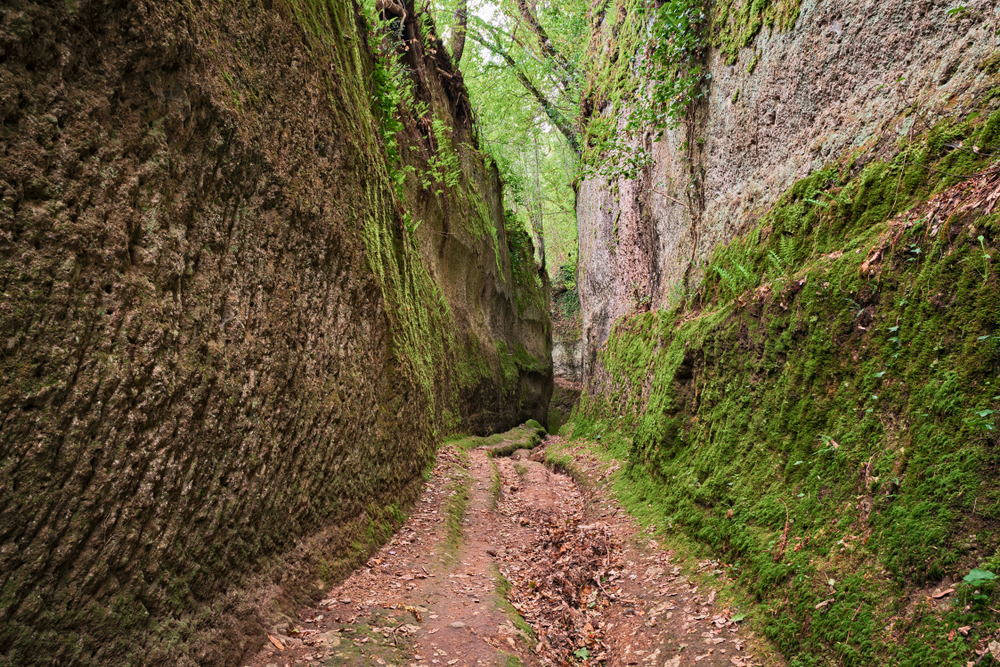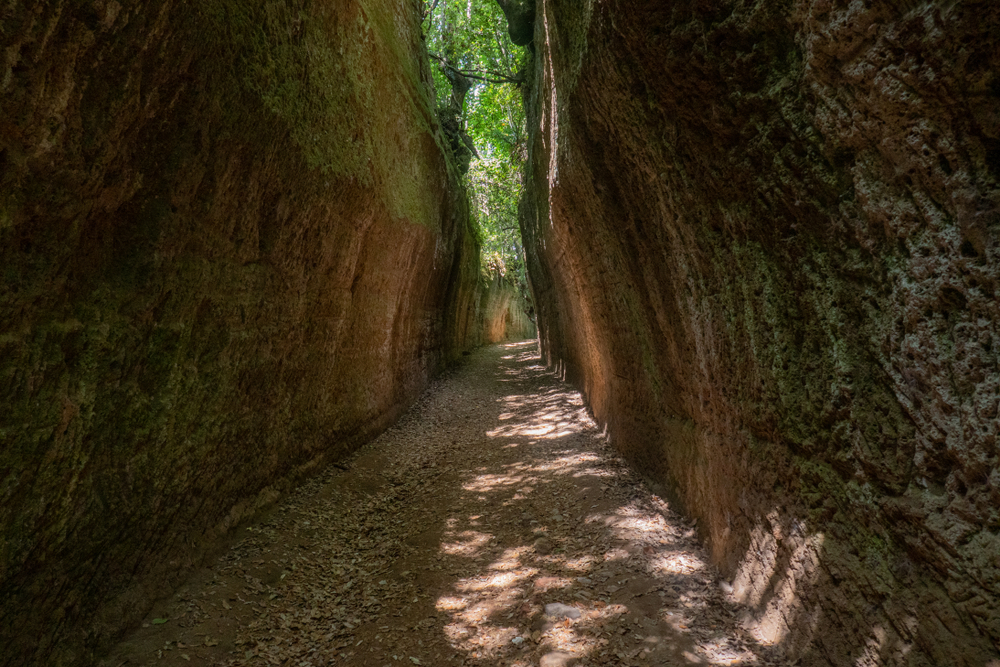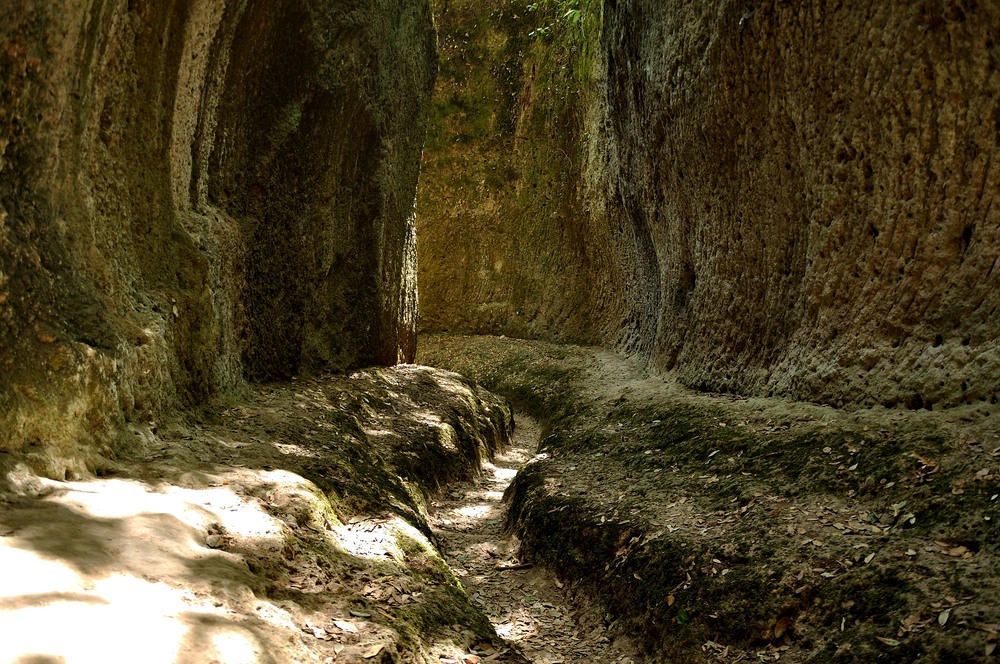In southern Tuscany, there is a mysterious network of old pathways deeply entranced into massive rocks appearing like narrow canyons flank...
In southern Tuscany, there is a mysterious network of old pathways deeply entranced into massive rocks appearing like narrow canyons flanked by stone walls, some of which rise up to twenty meters tall. Some of the pathways connect burial sites and tombs, others lead straight to towns such as Sovana, Sorano and Pitigliano and to nearby fields and streams. Chisel marks are visible all over the rocky surface indicating the laborious process by which these passages were excavated, but for what purpose is a mystery.

Via Cava in the town of Pitigliano, Italy.
The road network is named Via Cava, or Vie Cave, meaning excavated roads, but little is known about their origin. They are believed to have been carved by a civilization earlier than the Romans, perhaps the Etruscan that lived in ancient Italy approximately five hundred years before the Romans. It is also possible that the Via Cava is much older than assumed.
We do not know what Via Cava was used for. It could have been a road system, although one might wonder why the Etruscans bore through solid rocks when they could have built a path over the rocks or around it. Some believe it was a quarry, or a water channel, especially since some of them radiate from the town of Pitigliano down to the river banks. They might also have served a defensive function against invaders and wild animals. One contributor to The Megalithic Portal speculates that the trench like system could have been used to “drop boulders or boiling oil down on unwanted intruders.”
In Roman times segments of the Via Cava became part of the road system that was connected to the main trunk of the Via Clodia, an ancient road linking Rome and Manciano, through the city of Tuscania. Most of the Via Cava is too narrow for a cart to pass, but others show deep ruts that are typically produced by prolonged erosion of the bedrock by iron-rimmed wheels. At later times, small shrines and crucifixes were carved into the rock walls.
Today, these pathways with a lush vegetation of ferns and mosses growing on the walls and lots of shade make excellent hiking trails.

Photo credit: oltrelautostrada/Shutterstock.com

Photo credit: oltrelautostrada/Shutterstock.com

Photo credit: oltrelautostrada/Shutterstock.com


No comments